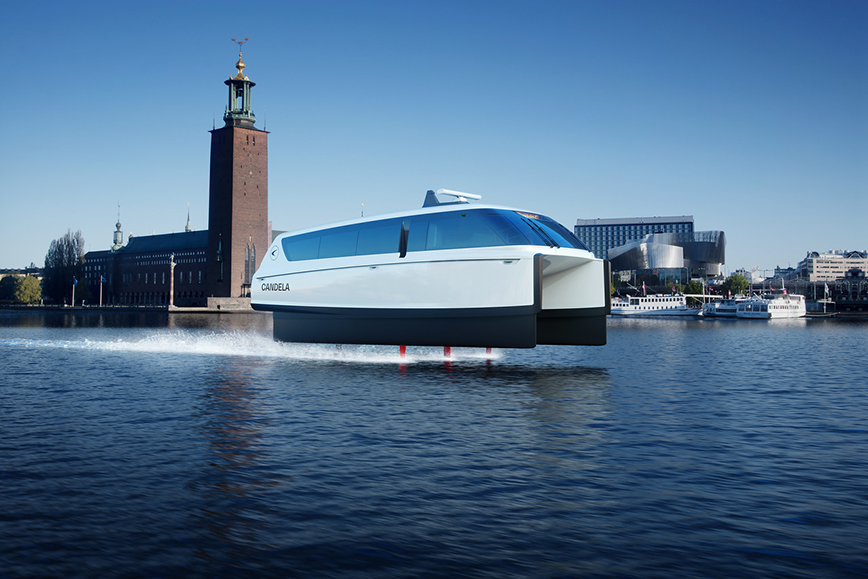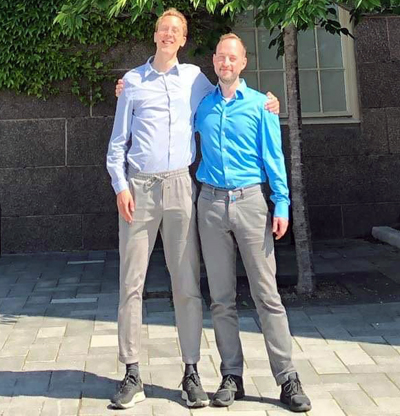Electric hydrofoil boats beat diesel boats for climate sustainability

Two KTH students have completed a master’s thesis comparing the carbon footprint of electric hydrofoil ferries to that of traditional diesel ferries. The study shows that the hydrofoil ferries emit 97.5% less carbon dioxide during their life cycle than diesel-powered ones.
Felix Glaunsinger and Dennis Olsson, who both graduated from KTH this summer, used the Life Cycle Assessment (LCA) method to compare and analyse CO2 emissions from electric hydrofoil and diesel boats.
“Life Cycle Assessment is about examining the environmental impacts relating to all the life cycle stages of a product, from extraction of raw materials, production, and use of the product until the end of its life cycle,” says Dennis Olsson.
Olsson and Glaunsinger conducted their thesis project at the company Candela, which manufactures electric hydrofoil boats. The results from the project are promising in terms of CO2 emissions. Their study shows that over a service life of 30 years, the carbon footprint from the electric hydrofoil boats is 97.5% lower than that of the diesel vessels used in the comparison.
Reduces hull drag

The hydrofoils used in this type of boat, i.e. hydrofoil boats, are essentially fold-out wings mounted on the bottom of the boat’s hull, Glaunsinger explains. The hydrofoils lift the boat’s hull out of the water at a certain speed, thus reducing drag in the water. This results in lower energy consumption.
“The combination of using hydrofoils and having electric power as the energy source is the primary factor behind the low emissions. And since Sweden’s power grid is almost completely free of carbon dioxide emissions, this is a clear benefit with using this kind of boat,” says Glaunsinger. He came to Sweden from Germany a few years ago to study the MSc programme in Sustainable Technology at KTH.
Probably the first study of its kind
There is much to indicate that this study is the first one to demonstrate the comparative environmental impact between electric hydrofoil ferries and traditional ones.
“In our study, we did find one comparison between conventional diesel-powered ferries and an electric alternative. But we found no other studies into the difference in environmental impact between electric ferries or boats in general with hydrofoil technology and traditional diesel-driven boats,” says Olsson. He has completed the MSc programme in Sustainable Technology at KTH.
He and Glaunsinger did find some uncertainty factors that are relevant to the study. One was the difficulty in obtaining data on the material composition of the boats used in the comparison. The material section of the assessment was therefore based on data from another ferry.
“This means that the proportions of the different components do not precisely reflect the ferries. But if you look at the total impact for all life cycle phases, the manufacturing phase is relatively small compared to the usage phase,” says Glaunsinger.
After graduating from KTH in the summer, Olsson began a trainee post at Stena Recycling. Glaunsinger works at a company that provides carbon dioxide management services for businesses.
Håkan Soold
